Valentin Osuna
Block matching algorithm for motion estimation based on Artificial Bee Colony (ABC)
Jun 30, 2014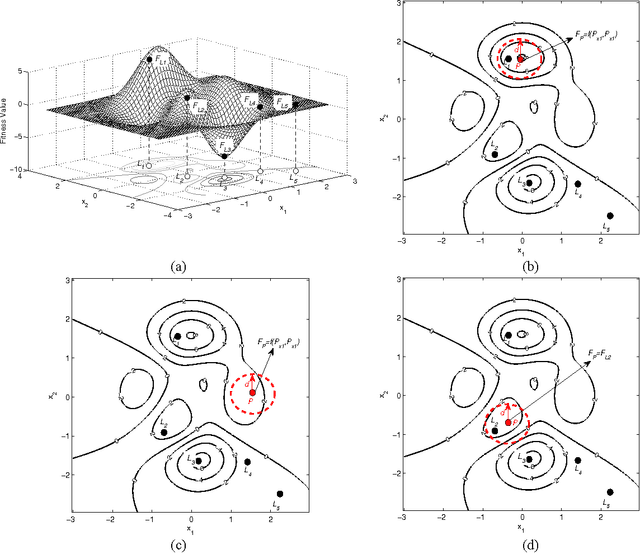

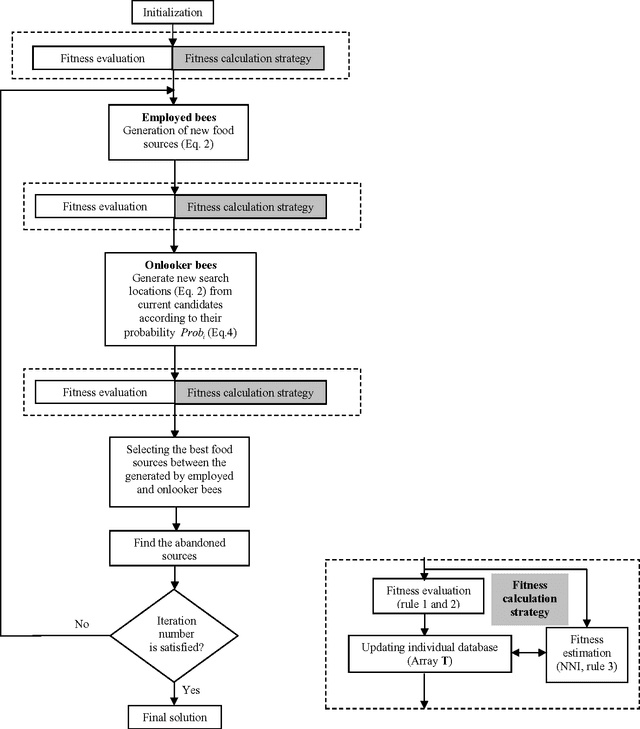
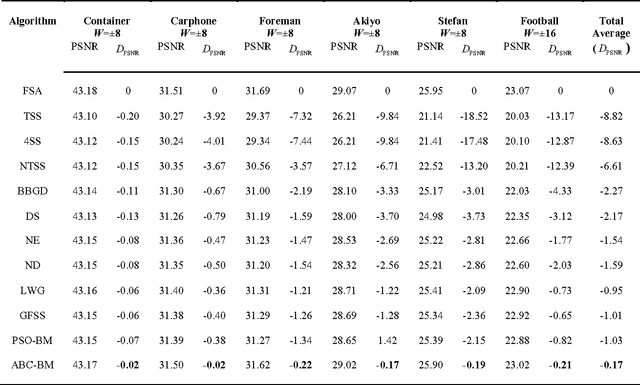
Abstract:Block matching (BM) motion estimation plays a very important role in video coding. In a BM approach, image frames in a video sequence are divided into blocks. For each block in the current frame, the best matching block is identified inside a region of the previous frame, aiming to minimize the sum of absolute differences (SAD). Unfortunately, the SAD evaluation is computationally expensive and represents the most consuming operation in the BM process. Therefore, BM motion estimation can be approached as an optimization problem, where the goal is to find the best matching block within a search space. The simplest available BM method is the full search algorithm (FSA) which finds the most accurate motion vector through an exhaustive computation of SAD values for all elements of the search window. Recently, several fast BM algorithms have been proposed to reduce the number of SAD operations by calculating only a fixed subset of search locations at the price of poor accuracy. In this paper, a new algorithm based on Artificial Bee Colony (ABC) optimization is proposed to reduce the number of search locations in the BM process. In our algorithm, the computation of search locations is drastically reduced by considering a fitness calculation strategy which indicates when it is feasible to calculate or only estimate new search locations. Since the proposed algorithm does not consider any fixed search pattern or any other movement assumption as most of other BM approaches do, a high probability for finding the true minimum (accurate motion vector) is expected. Conducted simulations show that the proposed method achieves the best balance over other fast BM algorithms, in terms of both estimation accuracy and computational cost.
* 22 Pages. arXiv admin note: substantial text overlap with arXiv:1405.4721, arXiv:1406.4484
A multilevel thresholding algorithm using Electromagnetism Optimization
Jun 24, 2014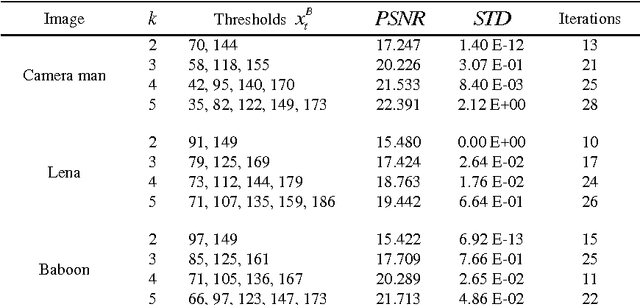
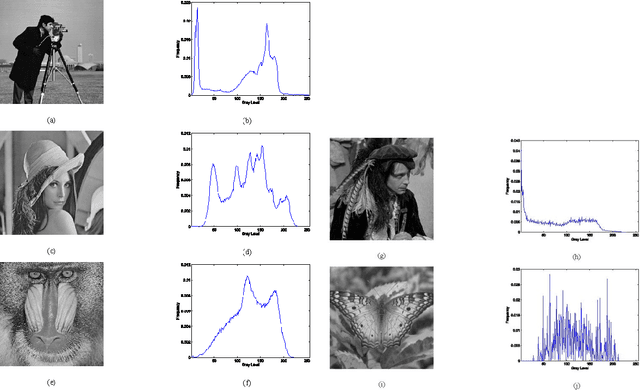
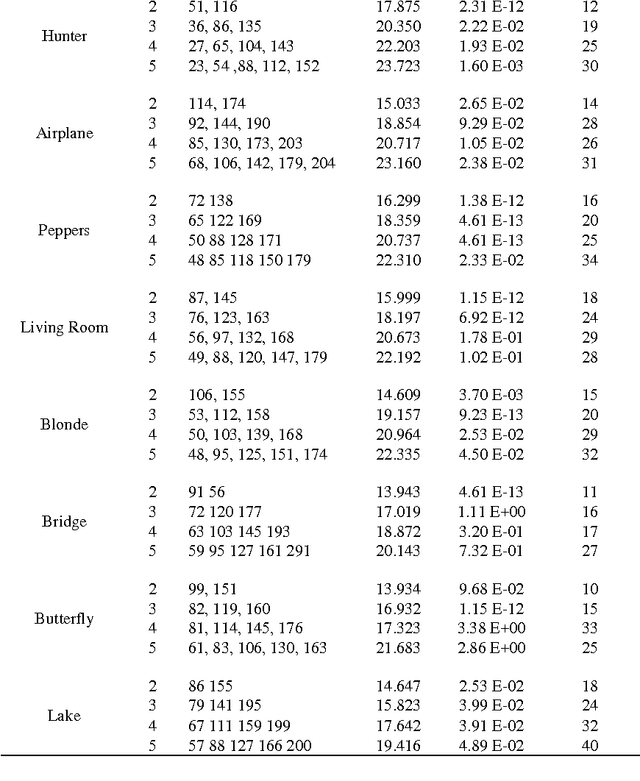
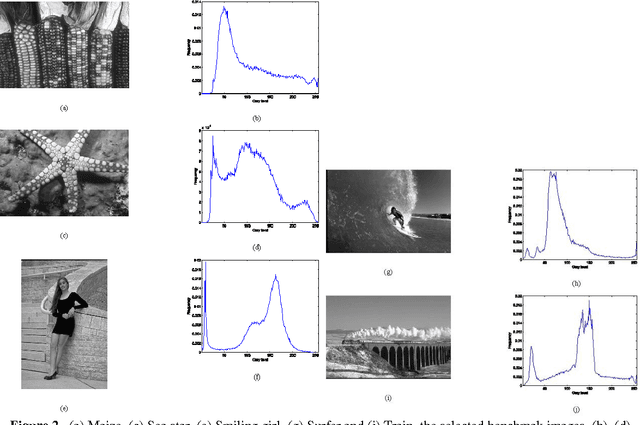
Abstract:Segmentation is one of the most important tasks in image processing. It consist in classify the pixels into two or more groups depending on their intensity levels and a threshold value. The quality of the segmentation depends on the method applied to select the threshold. The use of the classical implementations for multilevel thresholding is computationally expensive since they exhaustively search the best values to optimize the objective function. Under such conditions, the use of optimization evolutionary approaches has been extended. The Electromagnetism Like algorithm (EMO) is an evolutionary method which mimics the attraction repulsion mechanism among charges to evolve the members of a population. Different to other algorithms, EMO exhibits interesting search capabilities whereas maintains a low computational overhead. In this paper, a multilevel thresholding (MT) algorithm based on the EMO is introduced. The approach combines the good search capabilities of EMO algorithm with objective functions proposed by the popular MT methods of Otsu and Kapur. The algorithm takes random samples from a feasible search space inside the image histogram. Such samples build each particle in the EMO context whereas its quality is evaluated considering the objective that is function employed by the Otsu or Kapur method. Guided by these objective values the set of candidate solutions are evolved through the EMO operators until an optimal solution is found. The approach generates a multilevel segmentation algorithm which can effectively identify the threshold values of a digital image in a reduced number of iterations. Experimental results show performance evidence of the implementation of EMO for digital image segmentation.
* The figures have been shortened in order to fulfill the submission requirements
Fast algorithm for Multiple-Circle detection on images using Learning Automata
May 21, 2014



Abstract:Hough transform (HT) has been the most common method for circle detection exhibiting robustness but adversely demanding a considerable computational load and large storage. Alternative approaches include heuristic methods that employ iterative optimization procedures for detecting multiple circles under the inconvenience that only one circle can be marked at each optimization cycle demanding a longer execution time. On the other hand, Learning Automata (LA) is a heuristic method to solve complex multi-modal optimization problems. Although LA converges to just one global minimum, the final probability distribution holds valuable information regarding other local minima which have emerged during the optimization process. The detection process is considered as a multi-modal optimization problem, allowing the detection of multiple circular shapes through only one optimization procedure. The algorithm uses a combination of three edge points as parameters to determine circles candidates. A reinforcement signal determines if such circle candidates are actually present at the image. Guided by the values of such reinforcement signal, the set of encoded candidate circles are evolved using the LA so that they can fit into actual circular shapes over the edge-only map of the image. The overall approach is a fast multiple-circle detector despite facing complicated conditions.
* 30 Pages. arXiv admin note: text overlap with arXiv:1405.5406
 Add to Chrome
Add to Chrome Add to Firefox
Add to Firefox Add to Edge
Add to Edge